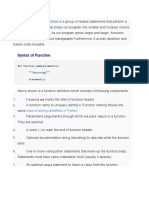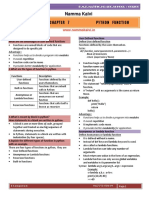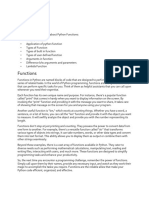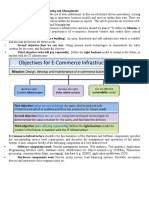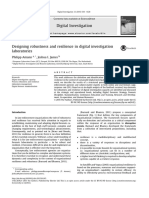0% found this document useful (0 votes)
2 views6 pagesFunctions
This document provides an introduction to functions in Python, explaining their definition, purpose, and how to define and call them. It covers various types of functions, including built-in, user-defined, and lambda functions, as well as the concepts of parameters and arguments. Additionally, it discusses function composition, the return statement, and recursion, highlighting their advantages and disadvantages.
Uploaded by
saranyaCopyright
© © All Rights Reserved
We take content rights seriously. If you suspect this is your content, claim it here.
Available Formats
Download as DOCX, PDF, TXT or read online on Scribd
0% found this document useful (0 votes)
2 views6 pagesFunctions
This document provides an introduction to functions in Python, explaining their definition, purpose, and how to define and call them. It covers various types of functions, including built-in, user-defined, and lambda functions, as well as the concepts of parameters and arguments. Additionally, it discusses function composition, the return statement, and recursion, highlighting their advantages and disadvantages.
Uploaded by
saranyaCopyright
© © All Rights Reserved
We take content rights seriously. If you suspect this is your content, claim it here.
Available Formats
Download as DOCX, PDF, TXT or read online on Scribd
/ 6


